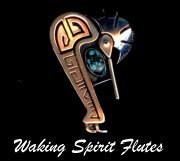Rare-Earth Magnet Blocks |
Magnetic Fields and Pacemakers You’ll find magnets in many everyday items such as fridge magnets, magnetic paper clips and electronic devices. If an appliance has a motor in it, you’ll find a magnet. Televisions, computers, automobiles, loud speakers, cell phones, and microwave ovens, all use magnets. Magnets are used to keep kitchen cabinet doors closed, are part of the sensors in home alarm systems, are used in some iPod and cellphone cases, jewelry - such as necklace and bracelet clasps, in magnetic resonance imaging systems, are used to slow elevators, roller coasters, and in countless other devices. Magnets are also used in 'well being' applications such as wrist bands, knee joint bands etc. However, there is some concern regarding the effects of magnets on pacemaker devices. Since there is no known insulator for magnetic flux, it is impossible to prevent this force from reaching pacemakers. As a result, current pacemaker design accommodates passive magnetic interference with minimal disruption to the device's function. Pacemakers have a preset default rate based on the patient's requirements at rest. This means that, in the presence of a strong static magnetic field (in excess of 20 gauss), the device will seek the default rate. The presence of a strong magnetic field should not cause the device to turn off or inhibit this default function. Because magnetic flux is poorly conducted in air, as well as human tissue, a large magnet would have to be very close to the pacemaker to create a problem. A reasonable field strength test can be done with a standard quartz watch, which generally has a tolerance of 10 gauss. To create a field strong enough to stop the quartz movement on a watch, a 1/2" dia. by 1/8" thick rare-earth magnet must be placed directly on the face of the watch. Once the magnet is removed, the watch, like the pacemaker, should return to its normal function without sustaining any permanent damage. Magnets used in my magnetic flute blocks are considerably smaller then those used in the quartz watch test detailed above. In the closed position (magnetic block fully assembled) a quartz movement watch is not affected. When the magnets are exposed and held 1/4” or more from a quartz movement watch, the watch is not affected. If you are unsure of the risks involved with coming into contact with any magnets it is advisable, in the interest of normal safety, for pacemaker patience to ensure they comply with the warnings supplied with their specific pacemaker. |


